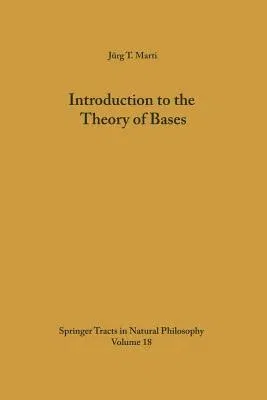Jürg T Marti
(Author)Introduction to the Theory of Bases (Softcover Reprint of the Original 1st 1969)Paperback - Softcover Reprint of the Original 1st 1969, 18 April 2014

Qty
1
Turbo
Ships in 2 - 3 days
In Stock
Free Delivery
Cash on Delivery
15 Days
Free Returns
Secure Checkout
Part of Series
Springer Tracts in Natural Philosophy
Print Length
151 pages
Language
English
Publisher
Springer
Date Published
18 Apr 2014
ISBN-10
3642871429
ISBN-13
9783642871429
Description
Product Details
Author:
Book Edition:
Softcover Reprint of the Original 1st 1969
Book Format:
Paperback
Country of Origin:
NL
Date Published:
18 April 2014
Dimensions:
23.39 x
15.6 x
0.89 cm
ISBN-10:
3642871429
ISBN-13:
9783642871429
Language:
English
Location:
Berlin, Heidelberg
Pages:
151
Publisher:
Weight:
240.4 gm

